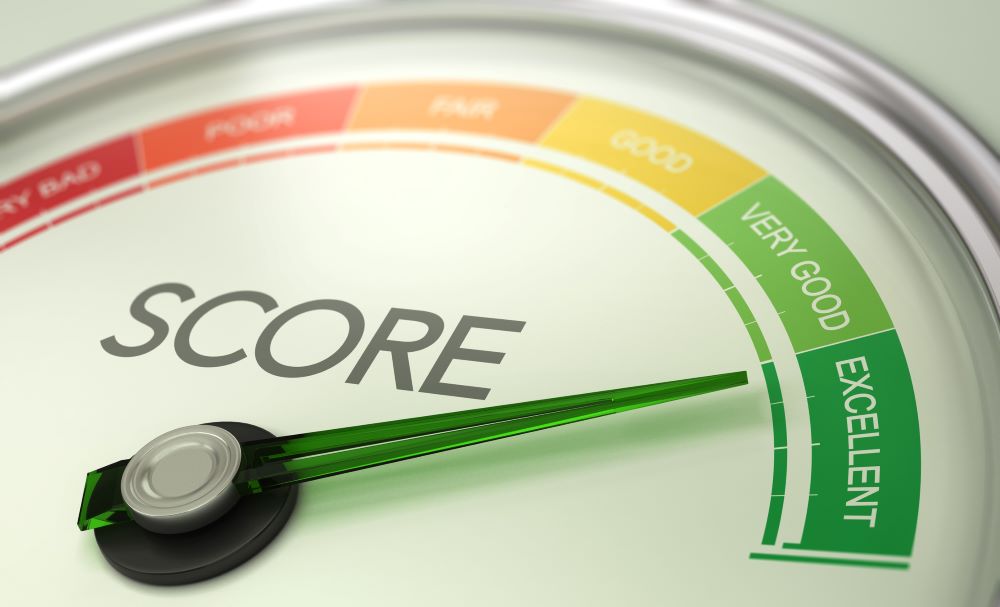What Does Credit Mix Mean?
Credit mix refers to the different types of loan accounts you hold. These accounts can include a mix of credit cards, car loans, student loans, mortgages, retail accounts and installment loans.
Credit Mix Determines 10% of Your Credit Score
Your credit mix is important to you and your FICO® Score because it is one of the factors creditors assess when evaluating the risks of lending you money. There are five factors that go into calculating your credit score: the amount of debt you owe, your payment history, new credit inquiries, length of credit history, and your credit mix. Credit makes up 10% of your total credit score.
When you successfully manage a good mix of different accounts, potential lenders see you as financially reliable. It shows you are capable of making both fixed and variable payments for different types of loans.
Given the low impact credit mix has on your overall FICO® Score, however, it’s not likely that this category alone will keep you from qualifying for credit. However, if you’re striving for the best possible FICO® Score and credit offers, then this category can’t be ignored.
Types of Credit Accounts
To begin working on your credit mix, it helps to understand the different types of credit accounts that affect your credit scores: installment, revolving and open accounts.
Installment Accounts
These types of accounts are loans you pay back in fixed payments each month until the balance is paid in full.
Here are some of the different types of installment accounts that you might obtain:
Auto: To finance the purchase of a vehicle, you’ll likely wind up applying for an auto loan issued by a bank, credit union or company that specializes in automobile lending. Auto loans generally take between 48 to 60 months to pay off, but they can be offered for shorter or longer terms.
Mortgage: Most mortgages are issued by a bank, credit union, or mortgage lender, with terms that allow you to pay off the purchase in as many as 30 years. Having a good credit when you apply for a mortgage can get you a lower interest rate, which can save you a lot of money over the life of the loan.
Student: Student loans are used to pay for tuition and room and board while attending school. These loans differ from other installment accounts because students aren’t expected to start paying them back right away. Student loans are deferred until a few months after the student graduates or stops going to school.
Home Equity: Home equity loans allow you to borrow against the value of the equity that you’ve built in your home. When you take out a home equity loan, you pay back monthly installments until you’ve paid it back. Keep in mind that home equity lines of credit don’t fall under this category as they’re actually revolving accounts.
Personal: You can obtain a personal loan from a bank, credit union, or online lender for any number of reasons. Most of these loans don’t require any type of collateral.
Credit Builder: These loans are a great way to positively impact your credit score and diversify your credit mix. Some financial institutions can allow you to put money into a savings account and then pay yourself back. When you’ve completed the payment terms, your savings are released back to you along with a small amount of accrued interest.
Revolving Accounts
Revolving accounts allow you to borrow money whenever you’d like, at any amount you like, up to a certain limit specified by the lender. It’s a type of variable You typically have to make minimum payments every month, but you don’t have to pay the balance in full. Instead, you have the option of carrying some of your balance over to the next month, and that’s the amount that lenders will charge you interest on.
These are some of the most common types of revolving accounts:
Credit Cards: Credit cards are generally issued by a bank, credit union, or financial services company. They’re backed by a major payment networks like Visa, Mastercard, or American Express and are extremely common.
Home Equity Line of Credit (HELOC): Like a home equity loan, a home equity lines of credit (HELOC) allows you to use your home equity as collateral for a loan. A HELOC however, isn’t an installment loan. In other words, you aren’t making fixed payments every month until you pay the loan back. Instead, they work similarly to credit cards: you can borrow as much as you need up to a certain limit and your payments are based on what you borrow.
Open Accounts
Open accounts, or “open credit,” have aspects of both revolving and installment loans. Primary examples of open accounts are utility bills. Like installment accounts, the bill is due in full at the end of the billing cycle but, as with revolving accounts, your monthly payments vary based on your usage.
Understanding Accounts on Your Credit Reports
Credit reporting agencies refer to credit accounts listed on your credit report as tradelines. Each account you have, including installment, revolving and open accounts, is considered a separate tradeline. Whenever a tradeline is added to your credit report, it also includes relevant information about the creditor and the debt that each account is attached to. Ultimately, each tradeline can impact your credit score.
How Can a Good Credit Mix Affect Your Credit?
Keeping up with different types of credit shows that you understand how to use and repay credit. Lenders consider this to be a good indicator of how you might handle credit in the future.
To gain all of the points from this portion of your credit score, you want to have several different types of revolving and installment loans. If you have revolving credit but no installment loans, consider adding a personal or credit-builder loan to diversify your credit. If you don’t have any revolving credit, it might be worth it to consider applying for a credit card. Just make sure that you keep credit utilization below the recommended 30% of your available credit limit.
Risks of Pursuing a Credit Mix Too Aggressively
Before you make plans to add credit accounts, monitor your credit report to see if your credit mix is harming your score in the first place. Most of the time, credit mix is something that develops organically over the course of our lifetime as we take out auto loans, student loans, credit cards, mortgages, etc.
Remember, credit mix is only 10% of your FICO® Score. While diversity in your credit mix is important, you shouldn’t take on additional financing you don’t need just to positively affect your score. If you do so, you might be sacrificing other areas of your credit score that a greater impact, like payment history or credit utilization.
While working on your credit score, it helps to understand how credit scores are calculated to find how you can help reach your credit goals.










